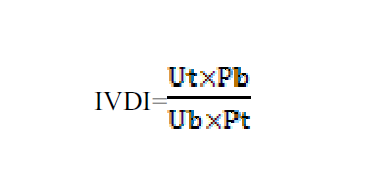For product managers in any industry, deciding on a pricing strategy can be a difficult task. There are a seemingly endless number of variables at play that can influence consumer reactions and decisions regarding your product. Having the right price can be the factor that reinforces or negatively affects the rest of your product strategy. For luxury goods in particular, choosing the right pricing strategy means looking at a number of variables that are difficult to quantify. Here's how to start calculating the right pricing strategy:
What is IVDI?
The Intrinsic Value Dependency Index is an effective way to determine the MSRP of a luxury good, according to the International Journal of Business and Management. The formula is based off of BMP (Behavior Perspective Model), and looks at the abstract specifications for an item—its most important qualities. It then assigns varying weights to these qualities and looks to other brands which are considered low end and mid-end for pricing data, creating a baseline upon which to gauge a starting price.
The Breakdown
Essentially, the IVDI formula creates an index for any luxury product category so long as you have basic information on other brands in the same industry. This is an incredibly useful way to predict consumer thinking without having to test different price points on the shelf.
In the below formula, “Ut” represents utilitarian reinforcement of a target consumer, and “Ub” represents the utilitarian reinforcement of the benchmark for a product category.
"Pt” Represents the baseline price for a target consumer, and “Pb” is the benchmark price for a product category. Applying these values to the below formula gives you the IVDI value.

The farther the IVDI number moves from one, the less standard it becomes. A number higher than one denotes a lower-end item, less than a commodity, while an IVDI less than one denotes a luxury item.

How can I use this?
Consumers who are purchasing luxury goods want to perceive, and want others to perceive, that they are in fact buying a luxury good. If the target market for a product does not perceive your product as more than a commodity, than the rest of your product strategy will come up short. Since some of the values above will be dictated by the market in which your product competes, the only variable that the producer really has control over is the target consumer. Altering the consumer persona until the IVDI has reached the preferred value is one way to gain foresight into product perception at retail.
While pricing strategies can be nerve-wracking to put together, and even more worrisome to execute, understanding which variables are going to affect your product perception gives you a huge competitive advantage over other brands operating in your luxury goods market. Traditional methods of determining price still hold merit, but it can never hurt to compare multiple pricing strategies and look for similarities and differences between them. With a great product and the right price, your luxury goods will be flying off of retail shelves everywhere.






